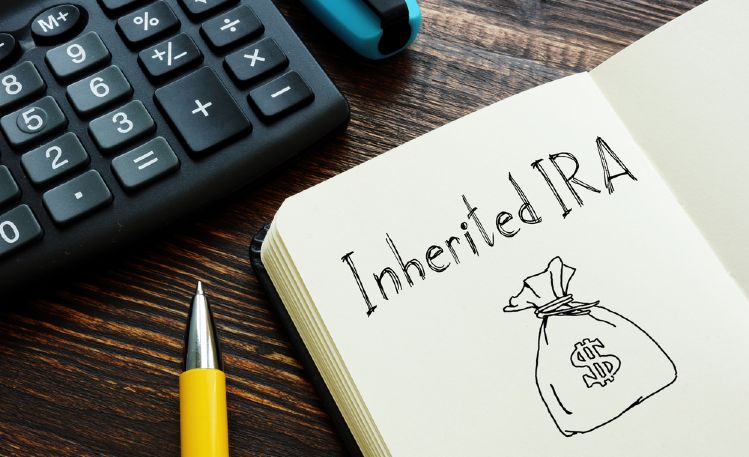In a recent private letter ruling, the IRS denied a claim to have IRA funds that were moved to a non-IRA account back into an IRA. While this doesn’t provide precedent and cannot be cited, it does show guidance for an Inherited IRA transfer. In short, if you want the tax benefits of the plan, make sure the funds remain in there. If you wish to move it to another custodian for example, do so carefully.
- The IRS issued a private letter ruling about an Inherited IRA
- A trustee-to-trustee transfer is the only way to move the IRA funds and maintain the tax advantages
- Self-directing the IRA may be an option if you wish to invest in alternative assets
The Facts
A tax payer (name withheld) had inherited an IRA from his or her spouse. The surviving spouse then named a trust as the new beneficiary of the IRA. He or she then named their children as trustees and beneficiaries of that trust. When the surviving spouse later died, the IRA became an Inherited IRA for the benefit of that trust.
The beneficiaries wished to trade stocks with the IRA. However, the custodian told them that they could not do that. Instead, they would need to transfer the funds into another account in order to trade. Which, in turn, they did. The new account was a non-IRA account.
After a few months, a request was sent to reverse the transfer to the new account. They wished to transfer those funds back to an Inherited IRA account, for the benefit of the trust.
In addition, they sought to not include funds transferred in their gross income. Lastly, they wanted to move the funds to any Inherited IRA, not back into the original plan.
The IRS Ruling
Once the surviving spouse passed, the IRA became an Inherited IRA for the benefit of the trust. Those assets are not permitted to be rolled over. The only way to move those funds from one custodian to another is a trustee-to-trustee transfer. The funds move directly from one custodian to the other. This is the only way to maintain the tax advantages of the plan.
In this case, the funds were moved out of the IRA and transferred to a non-IRA account. Because of this, they were considered distributed from the IRA and cannot then be put back into any IRA.
Following IRS rules, the distribution from the IRA must be treated as taxable income for the year in which it was taken. Therefore, all the funds withdrawn from the IRA will be considered as gross income for tax purposes.
Inherited IRA Transfer Guidance
It’s important to remember there are different rules for Inherited IRAs based on if you are the spouse or non-spouse of the decedent. A spouse can assume the IRA for his or her own. However, a non-spouse cannot, and therefore must follow the IRS rules to a tee.
Since the custodian of the IRA would not allow stock trading within the plan, the only play here was to do a trustee-to-trustee transfer to a new IRA custodian. Once the funds were moved from the IRA, all tax benefits of the IRA were lost.
Since it was a non-spouse beneficiary, they were allowed to keep the IRA intact for ten years before having to withdraw from the plan completely. That’s a decade of tax-deferred wealth that was lost.
Read More: Self-Directed IRA Rules
What Should YOU Do?
When you inherit an IRA and wish to invest with it, you must leave those funds in the plan. If the IRA custodian does not offer you such choices, you must do a trustee-to-trustee transfer of the funds to a custodian of your choosing. At no point, can you touch the funds in the IRA. Further, you cannot rollover those funds either.
In many cases, the custodian of the Inherited IRA will not allow you to make the investments you wish to make. While an inherited IRA can be a Self-Directed, many times individuals inherit a traditional IRA. A Self-Directed IRA allows you to make traditional investments, such as stocks and mutual funds, and alternative investments, like real estate, gold and private businesses.
While most inherited IRAs are not Self-Directed IRAs, you can choose to transfer the IRA to a Self-Directed IRA custodian, such as IRA Financial, which will allow you to make the investments you wish and diversify your retirement account.
Conclusion
Losing a loved one is the hardest thing in life. When financials are involved, it gets more difficult. If you are the beneficiary of an IRA, it’s important to know the best course of action for you. Generally, keeping the funds in the plan to grow tax-free is the smart way.
Obviously, the best way to grow those funds is by investing. If the custodian of the Inherited IRA is not for you, make sure you follow the trustee-to-trustee transfer rules. Remember, once the funds are moved from the IRA any other way, they are considered distributed. You cannot put them back into an IRA and you will owe taxes on them!











